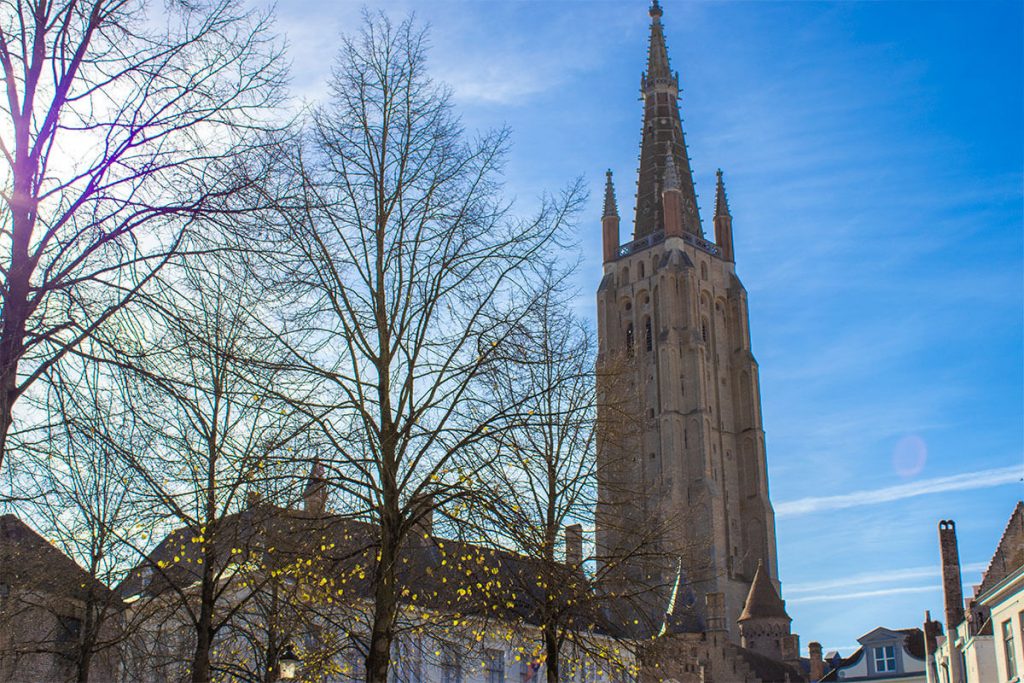Bruges and a growing cycling culture

A few days ago I visited Bruges in Belgium for a short family break.
The trip had nothing to do with cycling but it was a good chance to look at how another city handles the age-old problem of getting people in and out of town. Co-incidentally, MarkC forwarded the news that Bruges has decided to give bikes priority over other vehicles in the city centre. With that background I thought I’d deviate from our normal Surrey Hills based fare to give my perspective.
Before I start, it should be said that for a number of years now my family and I haven’t had the chance to visit many cities. Too much work, small children and lack of money has somewhat hampered our travel over the years. Other Moles are significantly better travelled and have got more perspective as a result.
The flipside of not getting out much is that you hopefully notice things you wouldn’t normally see. In the case of Bruges, it was my first visit and with my tourist hat on I could see how managing people in and out of the city was just one part of the whole.
About Bruges
Bruges is a small city at its heart with around 20,000 inhabitants in the centre, of a total population of 117,000 which extends north as far as Zeebruge on the coast (literally, Bruges on Sea). It is the sixth largest city in Belgium and it’s historic wealth – much of it arising from the 12th to 15th centuries – is the result of sitting at the crossroads of the northern Hanseatic League and southern trade routes.
Much of this trade was moved around by canals, which interlace the city and connect to the north coast and onward to places south like Ghent. This accounts for the city’s name – Bruges translates as ‘bridges’ in English, of which there are many across the city itself.
As a trading centre, Bruges has welcomed many foreign travellers over the years, bringing culture and goods and architectural styles with them so that today Bruges feels like a tolerant and open city. A key part of it’s success is now related to tourism.
What struck me most was how people-centric the middle of the city is. Most buildings are no more than 4 or 5 stories tall which gives a nice sense of proportion, except for the several towering churches which loom over the city to stamp their medieval authority on inhabitants.
There are many narrow, winding streets but a glance up almost always shows a church tower and it’s easy to imagine what impact this must have had on traders back to the middle ages. You can trade, yes. But don’t forget the church, make sure you keep in line and pay your dues!
Active travel
Bruges displays an admiral sense of civic pride. It’s clean, in good repair and teams of cleaners are visible keeping it that way. And, for the record (if you haven’t realised by now), it’s beautiful in a quaint, medieval way.
Entering the city by car from the south it is an easy drive along Koning Albert I-Laam which routes you into the R-30 ring road. There is a dedicated and well maintained cyclepath from just off the motorway all the way in, with roundabouts engineered to slow traffic naturally without limiting larger vehicles.
Once you pass you your first cycle flyover it is clear that bikes are encouraged. As you get into the old town, the bike becomes king.
Simply, there are bikes and bike infrastructure everywhere, moving at sedate pace with people of all ages using them. They are parked outside residential buildings, shops, wherever. It’s not as all-pervasive as in the Netherlands but it is clear the bike is an integral means of transport and expected to become more so.
With narrow roads and one-way systems, cars can get in and out but why bother when everywhere is an easy walk or an even easier cycle? To this end, car parks are multi-storey but subterranean. In EzelStraat quarter we parked in one of the nicest car parks I’ve seen, it even had polished concrete floors. Above ground, it was a primary school!
Out of the car, we walked. To the hotel, to the tourist sites, everywhere. The streets are narrow and enchanting and mostly cobbled, with one-way systems routing vehicles round residential neighbourhoods.
This for me is the key – within easy people-powered distances are work, shops, entertainment and cultural life which is why I say Bruges is such a people-centric city. In mornings and evenings people can be seen commuting back and forth, school kids can be seen going to and from school and the low level of vehicle trafic is moving slowly and carefully.
It feels calm and safe to be out and about and much of it is travelled by bike, with e-bikes fitting seamlessly into that picture. With everything close to hand it’s easy to do. Few people are in lycra; even fewer in crash helmets and it has absolutely nothing to do with sport cycling. But you see people of all ages living in and enjoying the city.
Now that the bike is given official priority across some 90 streets in the centre of town I expect the place to become even more attractive as a place to visit and in particular a place to live. The bike priority zone means cars do not have the right to overtake and bikes are allowed to ride in the middle of the road.
It’s easy as a visitor to say, but I think I could live quite well in Bruges!
If you haven’t visited, I recommend Bruges for a few days rest and definitely take a canal trip to see the city at its best. Top advice is plan where you want to eat and drink, you can eat well if you look around. We stayed in the centre but there’s enough bike lanes to make riding in from the perimeter via hire bikes an easy and cost-effective thing to do.
There is 1 comment on ‘Bruges and a growing cycling culture’
We love to get comments from our readers - if you've spent a few moments to comment, thank-you.






Related: Belgium battlefields Day 1: Dunkirk to Bruges - 58 miles - Rides - Muddymoles - mountain biking in the Surrey Hills and Mole Valley